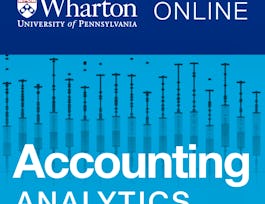This course discusses how public projects are evaluated using cost-benefit analysis. Learners discover how interest rates and prices for stocks and bonds are determined. Techniques are presented on how to create departmental budgets for engineering cost centers and pro forma statements for profit centers. Learners then work with corporate financial statements to assess a company’s financial health, including recent measures of environmental, social, and corporate governance (ESG).



Financial Forecasting and Reporting
This course is part of Finance for Technical Managers Specialization

Instructor: Michael J. Readey, Ph.D.
Top Instructor
Sponsored by Taipei Medical University [C4CB]
6,672 already enrolled
(52 reviews)
Recommended experience
What you'll learn
Read an income statement, balance sheet, and statement of cash flows and calculate relevant ratios to determine the financial health of a company
Learn to read and prepare an operating and financial budget, resulting in a pro forma financial statement
Apply scenario and sensitivity analysis to a project’s cash flows
Learn to read and interpret a company’s Corporate Sustainability Report
Skills you'll gain
- Budget Management
- Corporate Accounting
- Financial Planning
- Sustainability Reporting
- Enterprise Risk Management (ERM)
- Financial Forecasting
- Financial Reporting
- Risk Management
- Budgeting
- Financial Statements
- Finance
- Risk Analysis
- Corporate Finance
- Financial Analysis
- Financial Management
- Financial Accounting
- General Finance
- Management Accounting
- Environmental Social And Corporate Governance (ESG)
- Financial Statement Analysis
Details to know

Add to your LinkedIn profile
7 assignments
See how employees at top companies are mastering in-demand skills

Build your subject-matter expertise
- Learn new concepts from industry experts
- Gain a foundational understanding of a subject or tool
- Develop job-relevant skills with hands-on projects
- Earn a shareable career certificate


Earn a career certificate
Add this credential to your LinkedIn profile, resume, or CV
Share it on social media and in your performance review

There are 5 modules in this course
Investment decisions are often based on a company’s financial performance, and such performance is captured in its financial statements. The three examined in this course are the income statement, the balance sheet, and the statement of cash flows. Collectively, these provide a clear picture of a company’s profitability, its net worth, and how it manages its cash.
What's included
10 videos3 readings2 assignments1 discussion prompt
Financial statements inform management and investors about a company’s financial performance in absolute terms – dollars and cents. But it is often more valuable to understand performance in relative terms, such as gross profit relative to revenues, measured as a percentage. This makes it easier for management to compare one year to another and for investors to compare one company to another. Ratio analysis is the way this is done, and there are several categories of ratios that measure a company's liquidity, profitability, debt management, and investment potential.
What's included
9 videos1 reading1 assignment1 peer review
Technical Managers are often tasked with preparing an annual budget for their project team, department, or product line. This involves estimating future costs, and in the case of a profit center, forecasting future revenues. Such forecasts can be made more reliable through a combination of qualitative and quantitative techniques.
What's included
7 videos1 assignment
Forecasting future revenues and costs for a project invariably involves uncertainty, and such uncertainty equates to financial risk - the greater the uncertainty, the greater the risk. Risk management is about mitigating financial risk by assessing a project’s valuation under a range of different conditions, identifying the variables that most contribute to risk, and creating a plan to minimize the likelihood of any financial downside.
What's included
6 videos1 reading1 assignment
Sustainability has become an important consideration in how businesses operate and govern themselves. Managers today focus on their company’s Triple Bottom Line: measuring environmental and social impacts along with their financial performance. Investors are interested in this too, and in response, companies with sustainability as a strategic objective now report their non-financial performance – enabling investors to assess progress toward sustainability goals.
What's included
8 videos2 readings2 assignments
Instructor

Offered by
Why people choose Coursera for their career




Learner reviews
52 reviews
- 5 stars
86.79%
- 4 stars
7.54%
- 3 stars
1.88%
- 2 stars
1.88%
- 1 star
1.88%
Showing 3 of 52
Reviewed on Sep 26, 2023
Very interesting and great lecture videos. I can understand course materials clearly and all the lecture materials closely related to quizzes and exams!
Reviewed on Oct 19, 2023
Peer evaluation process consume more time. which is not satisfying
Reviewed on Jan 31, 2023
Very useful course for Technical Managers & anyone in a management role or looking to be in management roles.
Recommended if you're interested in Business

University of Pennsylvania

Corporate Finance Institute

University of Virginia

University of Pennsylvania

Open new doors with Coursera Plus
Unlimited access to 10,000+ world-class courses, hands-on projects, and job-ready certificate programs - all included in your subscription
Advance your career with an online degree
Earn a degree from world-class universities - 100% online
Join over 3,400 global companies that choose Coursera for Business
Upskill your employees to excel in the digital economy

